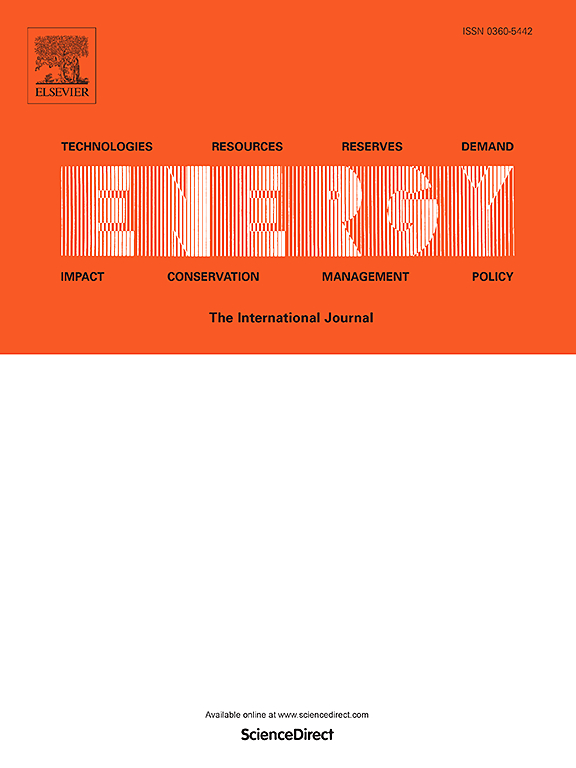Experimental and numerical investigation of spray cooling based photovoltaic/thermal system: Achieving high performance, low cost, and lightweight design
IF 9
1区 工程技术
Q1 ENERGY & FUELS
引用次数: 0
Abstract
In an age where the world faces increasing energy demands and environmental concerns, efficient and sustainable renewable energy solutions are imperative. This study investigates spray cooling as a promising approach to address conventional PV/T limitations in thermal management, reliability, and cost. Experimental and numerical analyses under realistic conditions demonstrate that the spray-cooled PV/T can achieve over 9 % power improvement versus PV, while reducing PV surface temperatures from 35 °C to 23.1 °C even under winter operation. Critically, spray cooling eliminates localized high-stress regions observed in conventional water-cooled PV/T (maximum stress: 106 MPa; deformation: 26 mm), ensuring structural integrity during prolonged operation. Economically, the spray cooling PV/T reduces the levelized cost of electricity (LCOE) compared to conventional PV/T under the different discount rates and O&M costs, with annual savings of 16.04 billion USD (1.5‱ of global GDP) through reduced installed capacity and optimized thermal energy recovery. Environmentally, it achieves reductions in water consumption (1.4‱ of global freshwater usage), land use (0.07‱ of non-arable area), and manufacturing-related greenhouse gas emissions (0.4‱ of global totals). By integrating lightweight design, efficient heat dissipation, and low-cost investigation, this work establishes spray cooling as a scalable pathway to enable widespread adoption of PV/T systems.
求助全文
约1分钟内获得全文
求助全文
来源期刊

Energy
工程技术-能源与燃料
CiteScore
15.30
自引率
14.40%
发文量
0
审稿时长
14.2 weeks
期刊介绍:
Energy is a multidisciplinary, international journal that publishes research and analysis in the field of energy engineering. Our aim is to become a leading peer-reviewed platform and a trusted source of information for energy-related topics.
The journal covers a range of areas including mechanical engineering, thermal sciences, and energy analysis. We are particularly interested in research on energy modelling, prediction, integrated energy systems, planning, and management.
Additionally, we welcome papers on energy conservation, efficiency, biomass and bioenergy, renewable energy, electricity supply and demand, energy storage, buildings, and economic and policy issues. These topics should align with our broader multidisciplinary focus.
 求助内容:
求助内容: 应助结果提醒方式:
应助结果提醒方式:


